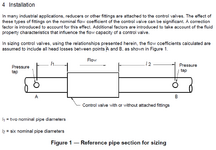Most of the control valve stations in my plant have immediate upstream and downstream bleeds where we can easily take pressure surveys and calculate theoretical flow based on Valve % Open and CV and compare with the measured flow.
However, I have this one control valve that I'd like to take a pressure survey, but the nearest bleeds are at least 5 FT away. Would these pressures still be accurate in calculating theoretical flow? Is there a reason why it's best practice to take pressures immediately upstream and downstream of a control valve?
However, I have this one control valve that I'd like to take a pressure survey, but the nearest bleeds are at least 5 FT away. Would these pressures still be accurate in calculating theoretical flow? Is there a reason why it's best practice to take pressures immediately upstream and downstream of a control valve?

